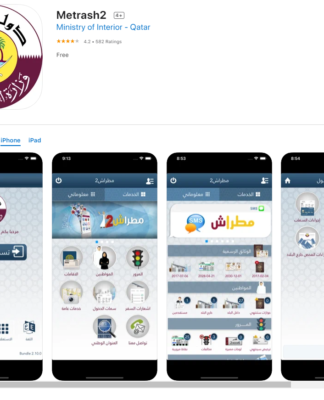BIZTECH NEWS
Audiobooks, e-books and now ‘a-books’: Can augmented reality take reading to the next level?
Could augmented books change the way we read in future?
Could augmented books change the way we read in future? – Copyright University of Surrey
By Nicole Lin Chang • Updated: 15/08/2022
We’ve all heard of e-books, but augmented reality might soon be giving us a brand new reading experience.
So-called “augmented books” – or “a-books” – could be coming to shelves near you in the future, with the University of Surrey announcing the latest version of a research project which seeks to combine the best of both physical and electronic books.
Like electronic books, augmented books would allow readers to access extra information or multimedia content about what they are reading; all while keeping the look and feel of a physical book.
AI Song Contest: The Eurovision spin-off where music is written by machines
For example, a fantasy novel reader could swipe their fingers over a character’s name in their augmented book, and have associated information such as their family tree pop up on their smartphone or another device.
Tourists could open up a physically augmented travel guidebook, and then have up-to-date information such as train times or opening hours flash up on their smartphone or other devices.
“An a-book is something in between an e-book and a traditional book,” Dr Radu Sporea, a senior lecturer at the University of Surrey’s Advanced Technology Institute, told Euronews Next.
“We’re familiar with traditional books obviously, and e-books are everywhere. They all have obvious benefits, but they all have downsides. And what we’re trying to do is to reconcile the benefits of both, without bringing the downsides”.
‘Magic bookmarks’
At a basic level, the idea is for a user to be able to flick through a physical book, and then have the book know what they are reading and be able to relay that information to a nearby device, such as a TV or a smartphone.
For around five years, Sporea and his colleagues have worked through various iterations of augmented book technology.
What does the future of shopping with artificial intelligence look like?
As part of their Next Generation Paper project, the team created an “a-book” prototype; with no visible electronics or wiring, the book allows users to trigger digital content with a simple gesture, such as the swipe of a finger or the turn of a page, and this content is then displayed on a nearby device.
We’re familiar with traditional books obviously, and e-books are everywhere. They all have obvious benefits, but they all have downsides. And what we’re trying to do is to reconcile the benefits of both, without bringing the downsides
Dr Radu Sporea
Senior lecturer, University of Surrey’s Advanced Technology Institute
The team also developed something called a “magic bookmark”: a physical bookmark with hidden electronics that recognises an optical pattern on the pages of a book.
It can be laid down on a page, and trigger relevant information to show up on a device such as a smartphone or screen.
This bookmark connects to an electronic system on the cover of the book, says Sporea. It boasts an array of light sensors, which can then pick up individual codes printed on each page.
“You put the bookmark somewhere in [the book], and then the bookmark has all of these sensors, and it just reads a code that will be printed [on the page],” he said.
“The best bit about this is that you can print it without having to introduce electronics on every single page of every book”.
The metaverse is opening up the world’s holiest sites to virtual pilgrims
Uses of augmented books
Of course, e-books already allow readers to access extra information. But Sporea says there are still key arguments in favour of reading from physical books.
“There are studies where they’ve shown that it’s much easier to remember where bits of information are because you’re locating them, you know, about halfway through the book, on the side of the left page, that sort of thing,” he said.
And also – people like reading physical books.
“It’s not just the consuming of the information. But it’s the physical handling of the book that perhaps is interesting,” he added.
“I’m not suggesting that this is going to be augmenting every single book, but there would be maybe fantasy novels, or user manuals, children’s books where you get all sorts of content coming out of the book; potentially wedding albums, where you could have a very precious item in itself and that would be the link to some multimedia, videos and things like that”.
At the moment, the team’s technology is being demonstrated in real life with the Climate Domesday Book, which triggers an interaction such as the playing of a video or audio on a nearby big screen relevant to what the user is reading.
The book was exhibited in Australia and is due to be exhibited in the United Kingdom.


























